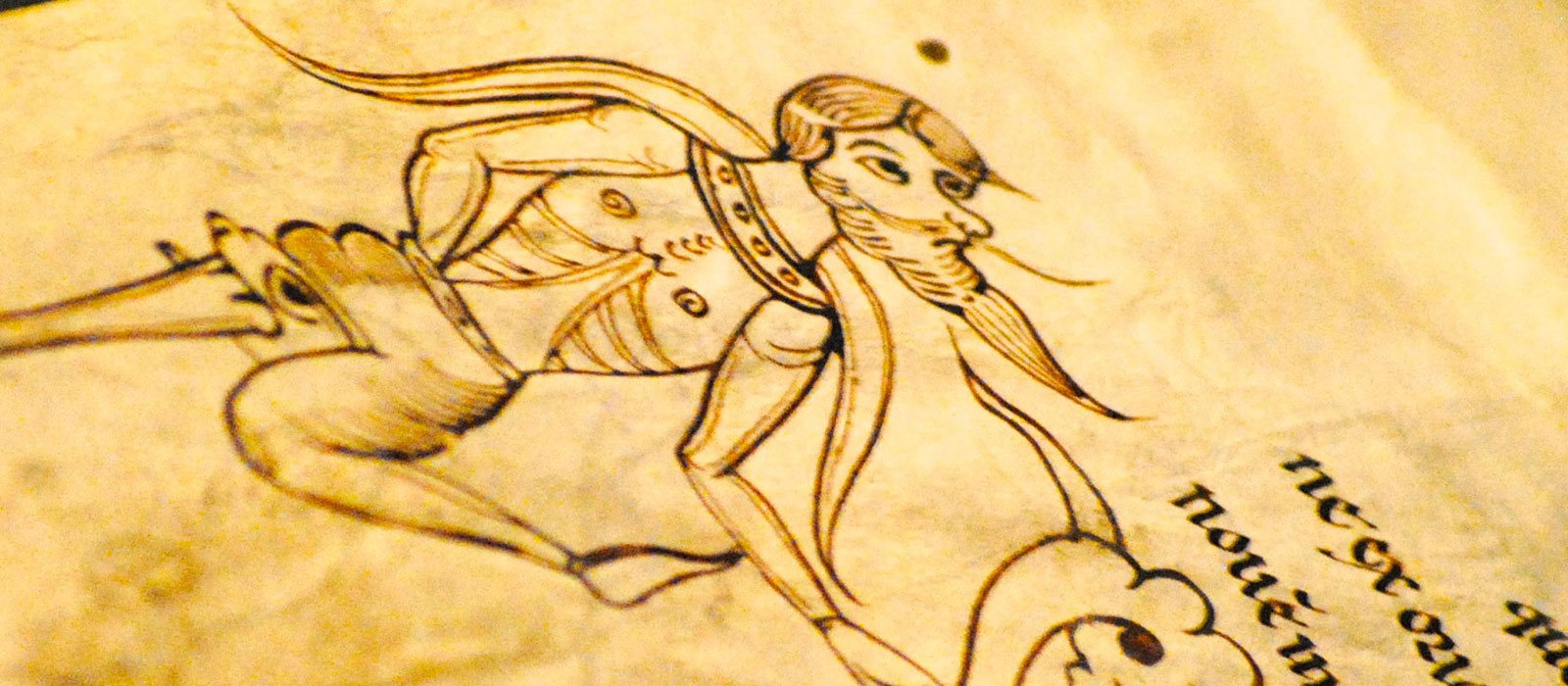The field of Medieval and Early Modern Studies is broad, but one with an inherent unity. Our program focuses on the major post-Roman Mediterranean cultures (Western European Kingdoms, Byzantine Empire, Islamic World) until early modernity (ca. 1650). These are societies with shared roots in Hellenistic and Roman government, literature, philosophy, theology that came to develop new communities and new forms of social organization as well as to adopt new languages and forms of expression. In the early-modern period, these cultures expand beyond the Mediterranean to colonize a newly emerging Atlantic World.
The Minor in Medieval and Early Modern Studies offers a pathway for students to broaden their interest in the Late Antique, Medieval and Early Modern Worlds by taking an interdisciplinary program linking together the many courses offered at Carleton in different departments. Medievalists and Early Modernists are interdisciplinary and international by necessity and by training: understanding medieval art, for example, often demands a knowledge of medieval architecture, religion and liturgy. Grasping the novelty of Reformation religious practices depends on a knowledge of medieval religion as well as contemporary political and social debates. Reading Renaissance chronicles, likewise, requires an understanding of how fifteenth-century Venetians rework a literary tradition developed in medieval monasteries. And Islamic intellectual culture depends not only on Muslim thinkers, but is in dialogue with Classical Greek texts, and it was Islamic, as well as some Christian and Jewish scholars, who were writing in Arabic.
In addition to the interdisciplinary MEMS core courses, Carleton offers a wide range of courses offering many windows on the medieval and early-modern experience. Students are invited to explore the cultures and societies of the medieval and early-modern worlds through the study of art and architecture, language and literature, medieval religions, including such topics as:
- how manuscripts were copied and decorated
- how paper, woodcuts and moveable type changed how books and knowledge spread
- how sculpture, painting and the decorative arts developed in different but parallel fashion in the European, Byzantine and Islamic Worlds.
- how the Renaissance established the methods and the very idea of art that we use today
- how the administrative languages of Latin and Greek gave way to vernaculars like English, French, German, Italian and Spanish over the course of the medieval and early modern period
- how Arabic became an administrative language for the Southern Mediterranean
- how the rise of vernacular writing meant new kinds of texts and ideas could appear in in the medieval and early modern period
- the continued use of Latin and Greek as the international languages of diplomacy, scholarship and administration
- how monumental architecture, like mosques, castles and cathedrals, developed from the unique social, political, economic and technological contexts of their time
- how medieval and early modern power and politics depended on a synthesis of military might, economic control and religious support
- how the medieval practices of war and development of state formation prepared the way for Europe’s colonization during Early Modernity.
